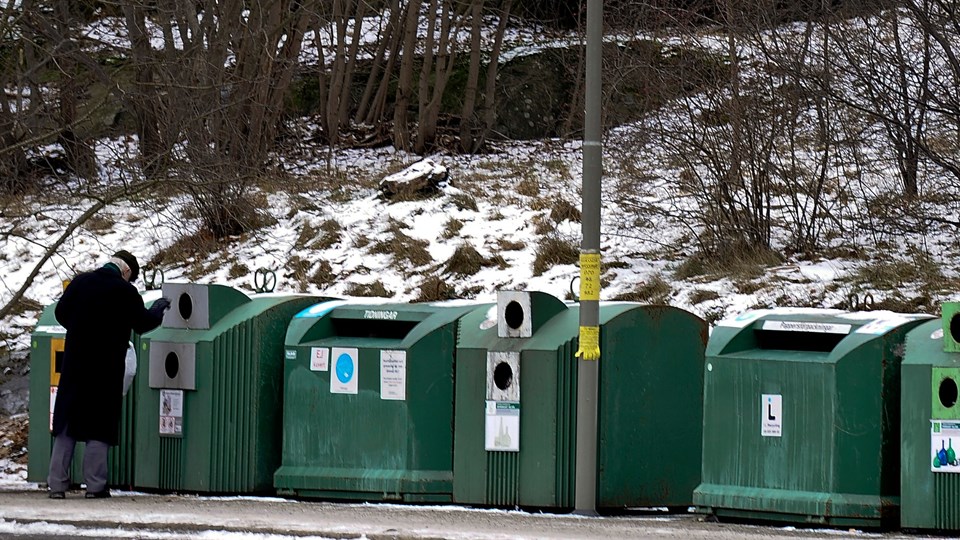Circular thinking
Despite fifty years of recycling of newspapers, garbage, and packaging, it is still possible to hear questions like: Why? What´s the use? Experts from the City of Stockholm Environment & Health Administration clear up these kinds of questions.
Since the 1970´s paper has been collected, sorted and recycled in Sweden. Now, fifty years later, packaging made of glass, metal, cardboard and plastics are also recycled, all over Sweden, together with batteries, electronic waste and food waste. The producers of packaging and newspapers have a responsibility to collect and recycle the packaging they produce. Recycling stations can be found all around Stockholm.
Stockholm Vatten och Avfall (Stockholm Water and Waste Treatment) are responsible for the collection and treatment of food waste, residual waste, bulky waste and hazardous waste from the city´s households. Jonas Dahllöf is the head of unit.
The citizens of Stockholm are good at recycling – but we can do even better!
To recycle one´s waste is good, both for the environment and for society. The citizens of Stockholm are good at recycling in general, but Jonas thinks we can do even better. 35 percent of our household waste is food waste.
35 percent of our household waste is food waste.”
– If our food waste is collected it can be transformed into biogas that can replace fossil fuel, and bio fertilizers that can replace synthetic fertilizers in the agricultural sector. And the packaging that is sorted in the right container is made into new packaging, Jonas says.
Is all the waste mixed in the end anyway?
One common question asked is if the collected food waste is mixed with the residual waste in the end. Is this the case? Jonas answers:
– Food waste and residual waste is never mixed. But in some areas the two parts are collected by the same truck. The truck has two different compartments which treat the waste separately. The food waste is transported to a biogas plant to be made into biogas and bio fertilizers. The residual waste is transported to a waste-incineration plant where the energy is recycled into electricity and district heating. The two kinds of waste never get mixed and are recycled separately from one another, with large environmental- and climate benefits.
Why would you mix the waste when everyone has made such an effort to separate it?
Food waste and plastics make the biggest difference
Of your household waste, recycling of food waste and plastics makes the largest impact for the climate.
– Why would one mix the different kinds of waste when so many people have made efforts to separate them? The sorted materials are important resources for the production of new packaging and products, Jonas says.
Take care of our environment and sort out your waste as well as you can. And don´t litter! All this makes a big difference.
Plastics in particular can be very bad from a perspective of littering, both on land and in our waters.
– You have probably seen pictures of the big heaps, or “islands” of plastic garbage floating around in our oceans; and heard about the problems with micro plastics that are found, unfortunately, almost everywhere. Take care of our environment and sort your waste as well as you can. And don´t litter! All this makes a big difference, says Jonas.
Give it a second chance!
Another way to recycle is to reuse: buy things second hand instead of new, fix things that are broken, and rent things instead of buying them.
– Give things a second chance! And reduce food waste by not buying more than you need. When your things are finally totally worn out, it´s time to recycle them.

